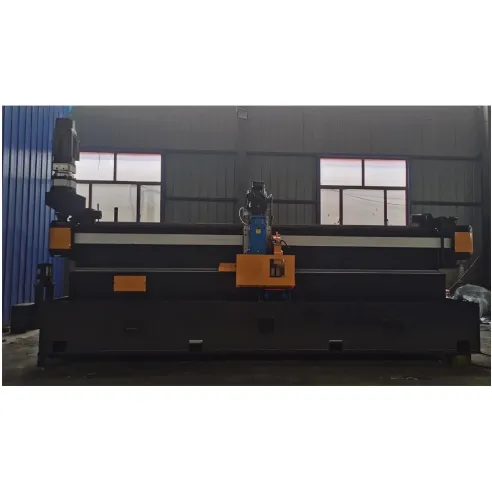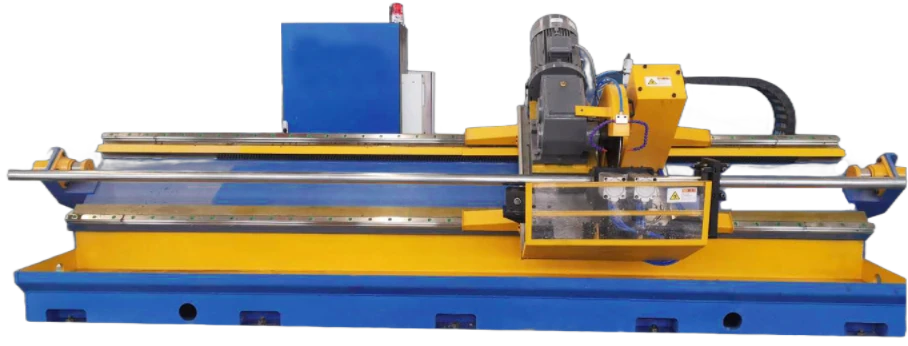Mar . 05, 2025 07:25
Back to list
Stacking Machine Products
Pipe beveling is a critical step in the preparation of pipes for welding and joining. Traditionally, manual methods of beveling were both time-consuming and inconsistent, often leading to quality issues and increased labor costs. Enter the pipe bevel cutting machine—a game-changer in the world of pipe fabrication. These machines are designed to provide consistent, precise, and efficient bevels on pipes of varying diameters and materials, from carbon steel to stainless steel.
When considering a pipe bevel cutting machine, understanding the specific application is vital. Machines vary in capability, with some designed for small-scale operations and others equipped for large, industrial-scale projects. It is crucial to evaluate the machine's compatibility with the types and sizes of pipes regularly used, the frequency of operation, and the specific beveling requirements of the application. Some models offer customizable bevel angles to accommodate various welding specifications, providing flexibility in operations across different projects. Investing in a machine that integrates well with existing workflows is another crucial factor. The best machines offer versatility, allowing for swift changeovers between different pipe sizes and materials with minimal downtime. This adaptability is essential for operations where multiple projects with varying requirements are ongoing, maximizing efficiency and productivity. The pipe bevel cutting machine also contributes to safer working environments. By automating what was once a physically demanding manual task, these machines minimize the risk of injury associated with manual handling of tools and pipes. The precision provided reduces the chance of errors that require rework, thereby streamlining processes and enhancing overall safety through consistent and high-quality outputs. Overall, the adoption of pipe bevel cutting machines represents a strategic enhancement for any operation involved in pipe fabrication and installation. With their ability to deliver precise, consistent bevels while reducing labor costs and improving operational safety, these machines are not only an asset but a necessity in modern industrial applications. Whether for small-scale workshops or large industrial mills, selecting a machine that aligns with specific operational needs and is backed by expert support is crucial for maintaining high standards of production quality and efficiency.


When considering a pipe bevel cutting machine, understanding the specific application is vital. Machines vary in capability, with some designed for small-scale operations and others equipped for large, industrial-scale projects. It is crucial to evaluate the machine's compatibility with the types and sizes of pipes regularly used, the frequency of operation, and the specific beveling requirements of the application. Some models offer customizable bevel angles to accommodate various welding specifications, providing flexibility in operations across different projects. Investing in a machine that integrates well with existing workflows is another crucial factor. The best machines offer versatility, allowing for swift changeovers between different pipe sizes and materials with minimal downtime. This adaptability is essential for operations where multiple projects with varying requirements are ongoing, maximizing efficiency and productivity. The pipe bevel cutting machine also contributes to safer working environments. By automating what was once a physically demanding manual task, these machines minimize the risk of injury associated with manual handling of tools and pipes. The precision provided reduces the chance of errors that require rework, thereby streamlining processes and enhancing overall safety through consistent and high-quality outputs. Overall, the adoption of pipe bevel cutting machines represents a strategic enhancement for any operation involved in pipe fabrication and installation. With their ability to deliver precise, consistent bevels while reducing labor costs and improving operational safety, these machines are not only an asset but a necessity in modern industrial applications. Whether for small-scale workshops or large industrial mills, selecting a machine that aligns with specific operational needs and is backed by expert support is crucial for maintaining high standards of production quality and efficiency.
Prev:
Latest news
-
High Frequency Straight Seam Welded Pipe Production Line|BzZhou Xinghua|Precision Welding&EfficiencyNewsJul.30,2025
-
High Frequency Straight Seam Welded Pipe Production Line - BzZhou Xinghua|Precision Engineering&EfficiencyNewsJul.30,2025
-
High-Frequency Straight Seam Welded Pipe Production Line-BzZhou Xinghua Machinery Equipment Manufacturing Co., LTD.NewsJul.30,2025
-
High-Frequency Straight Seam Welded Pipe Production Line-BzZhou Xinghua Machinery Equipment Manufacturing Co., LTD.|Precision Manufacturing, High EfficiencyNewsJul.30,2025
-
High Frequency Straight Seam Welded Pipe Production Line-BzZhou Xinghua Machinery Equipment Manufacturing Co., LTD.|Precision Steel Pipe Manufacturing&Industrial EfficiencyNewsJul.29,2025
-
High-Frequency Straight Seam Welded Pipe Production Line-BzZhou Xinghua Machinery Equipment Manufacturing Co., LTD.|Precision Steel Pipe Manufacturing&Industrial EfficiencyNewsJul.29,2025


